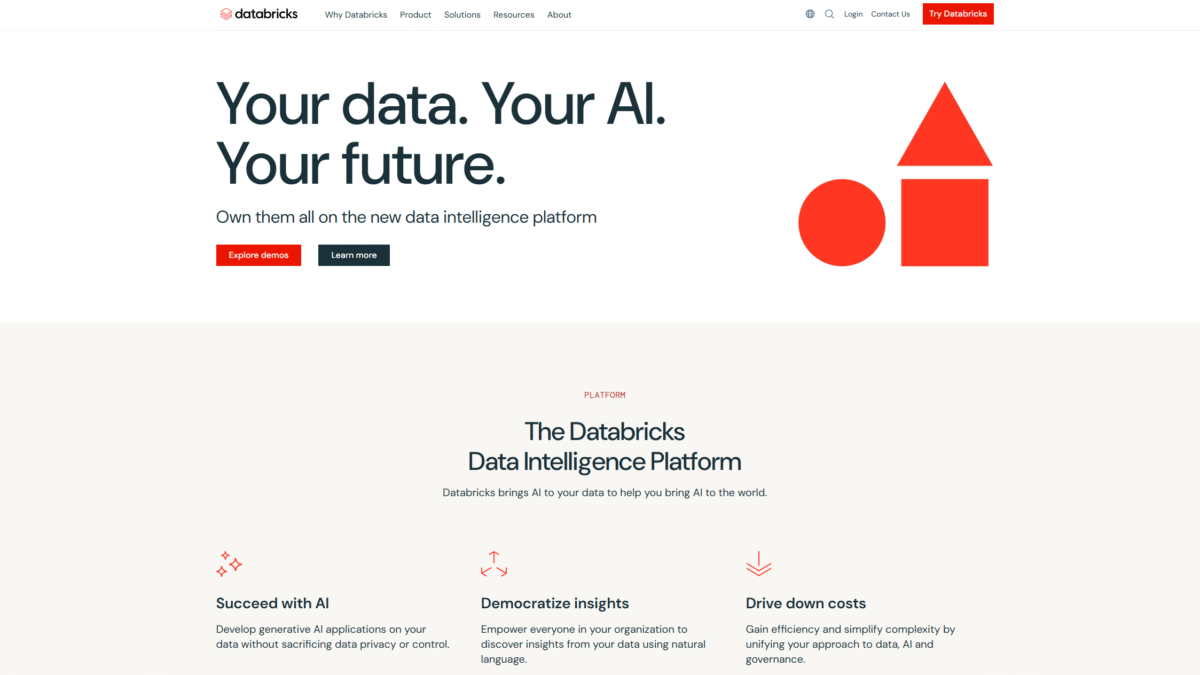
Master Big Data Analytics with AI-Driven Insights
In today’s data-driven world, mastering big data analytics is critical for staying ahead. I rely on Try Databricks for Free Today to unify massive datasets, apply advanced AI models, and uncover actionable insights within seconds.
Understanding Big Data in Today’s Enterprise
The term big data refers to extremely large volumes of structured and unstructured information that traditional processing tools struggle to handle. Enterprises collect data from customer interactions, sensors, logs, social media, and more—creating opportunities to optimize operations, personalize experiences, and drive revenue growth. Yet without the right platform, this liquidity becomes chaos.
Databricks offers a cloud-based foundation for ingesting, transforming, and analyzing petabytes of data. By integrating storage, compute, and governance, it empowers teams to move from raw information to business impact at lightning speed.
Why a Data-Centric Approach Matters
A data-centric strategy places high-quality data at the heart of every AI and analytics initiative. Instead of bolting AI onto siloed datasets, you build models where lineage, quality, and privacy are enforced end to end. That means:
- Provenance: Track each data asset’s origin and transformations.
- Quality: Implement automated validation checks before models consume data.
- Control: Enforce access policies and encryption everywhere.
With Databricks, every stage—from ETL pipelines to model deployment—operates on governed, trustworthy data, accelerating innovation and reducing risk.
Key Features of Databricks for Big Data Analytics
Unified Data Platform
Databricks brings together data engineering, data warehousing, and machine learning into a single workspace. You can:
- Run ETL tasks at scale using Spark-based clusters.
- Query data with ANSI-SQL for BI dashboards.
- Develop and deploy ML models in the same environment.
End-to-End Data Governance
Maintaining compliance and security across massive datasets is seamless:
- Structured lineage tracking for audits.
- Role-based access controls and encryption at rest and in transit.
- Automated policy enforcement across clouds.
Generative AI Integration
Build, fine-tune, and serve your own foundation models alongside third-party solutions:
- Train custom GenAI on proprietary data.
- Deploy foundation models with fine-tuning pipelines.
- Evaluate agents and optimize via automated experiment tracking.
Real-Time Analytics and Streaming
Ingest millions of events per second to power dashboards and alerts:
- Use Structured Streaming for low-latency processing.
- Integrate with Kafka, Kinesis, and other event hubs.
- Generate live insights without batch delays.
Collaborative Workspaces
Data scientists, engineers, and analysts work side by side in notebooks and dashboards:
- Share results via interactive notebooks that combine code, visuals, and markdown.
- Comment, version, and schedule jobs directly.
- Reduce handoffs and accelerate delivery.
Benefits of Leveraging Databricks for Big Data
- Speed to Insight: Unified compute and storage cut query times from hours to seconds.
- Cost Efficiency: Autoscaling clusters and pay-per-second billing drive down operational spend.
- Scalability: Seamlessly handle workloads from gigabytes to petabytes.
- Governance: Built-in security and lineage reduce compliance headaches.
- Innovation: Integrated AI tooling unleashes creativity across teams.
- Flexibility: Plug into existing ETL, BI, and ML tools without re-architecting.
Driving Efficiency and Cost Savings
Databricks simplifies infrastructure management by unifying cloud resources under a single pane of glass. Rather than maintaining disparate clusters for ETL, analytics, and machine learning, you optimize utilization and eliminate waste. With committed use and pay-as-you-go pricing, you only pay for what you consume, whether that’s high-throughput data processing or model training.
Ensuring Data Privacy and Control
As regulations tighten around personal information, companies need airtight controls. Databricks enforces encryption, fine-grained access, and audit logging to meet GDPR, CCPA, HIPAA, and other standards. Your sensitive information remains locked down, even as teams experiment with generative AI on private datasets.
Scaling Analytics for Future Growth
Whether you’re a fast-growing startup or a global enterprise, Databricks scales elastically. Start small with a handful of data scientists, then onboard thousands of users without retooling. The platform’s multi-cloud support ensures you can grow on AWS, Azure, GCP, or all three simultaneously.
Getting Started with Databricks
Follow these simple steps to kick off your big data transformation:
- Sign up for a free trial at Try Databricks for Free Today.
- Connect your cloud storage or data lake.
- Spin up a cluster and load sample datasets.
- Leverage built-in notebooks to explore data and prototype models.
- Deploy production pipelines with automated monitoring and alerts.
Conclusion
When it comes to unlocking the full potential of big data, Databricks stands out as the most comprehensive, scalable, and secure solution on the market. From data ingestion to generative AI deployment, you maintain end-to-end control while empowering every team member to innovate. Ready to revolutionize your analytics and AI initiatives? Try Databricks for Free Today and experience the future of data intelligence.
